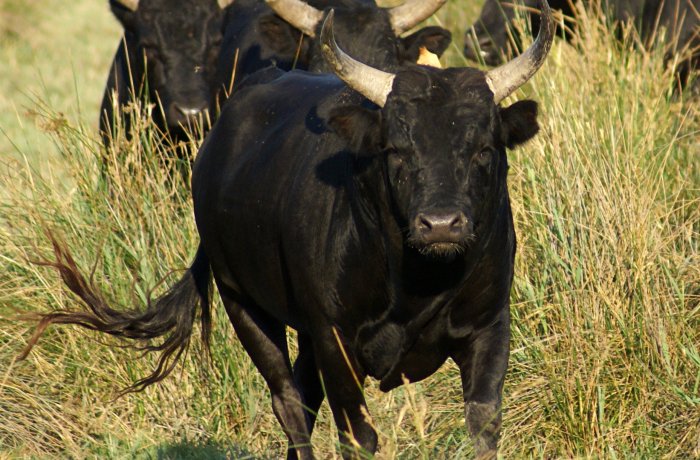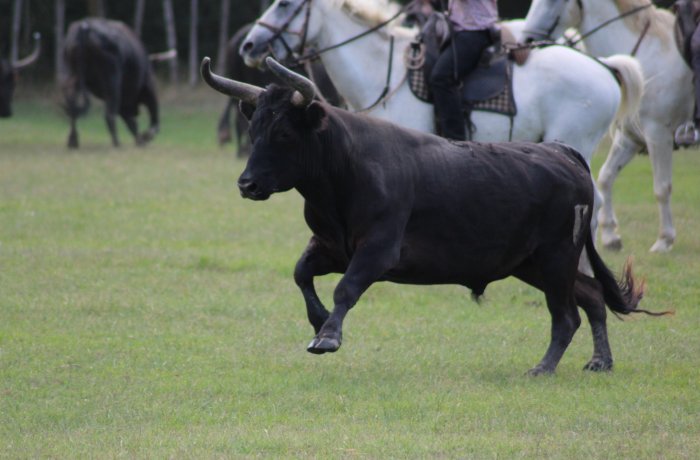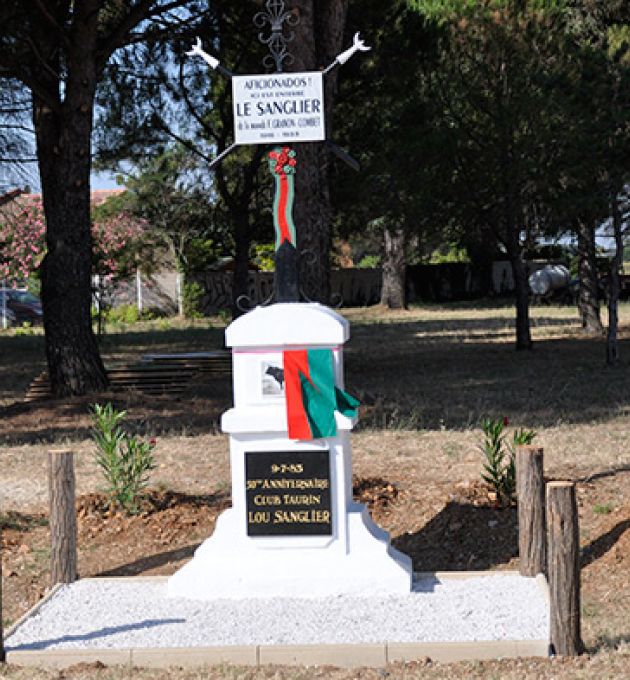
Le gardianou s’en va le seden sur l’épaule attraper son chivaü pour acamper les bioüs.
In the Camargue, traditions are an integral part of our culture
The result of years of selective-breeding, the bull has something of a cult status. It is at the centre of all popular cultural festivals, or as we call them, “fêtes votives”. The “course camarguaise” (Camargue-style of bullfighting) is the main attraction. Viewed from the outside as a kind of game between bulls and “raseteurs” (bullfighters), it is recognised as a sport through the French Federation of “Courses Camarguaises”. The “raseteurs” dressed in white must remove the “attributs” (rosettes and strings) placed around the horns of the bulls. The most valiant bulls are called “cocardiers” and their names appear at the top of posters.
Empègues

In some villages you can see small images stencilled the doorways of houses: they are called “empègues”. They are affixed by the villages’ young people during the “Aubades” (collection of donations for the organisation of the “fête votive”, parties in celebration of the village’s patron saint).
Services
Les visites guidées d'Alicia
Discover the Camargue bullfighting from the inside with Alicia.






